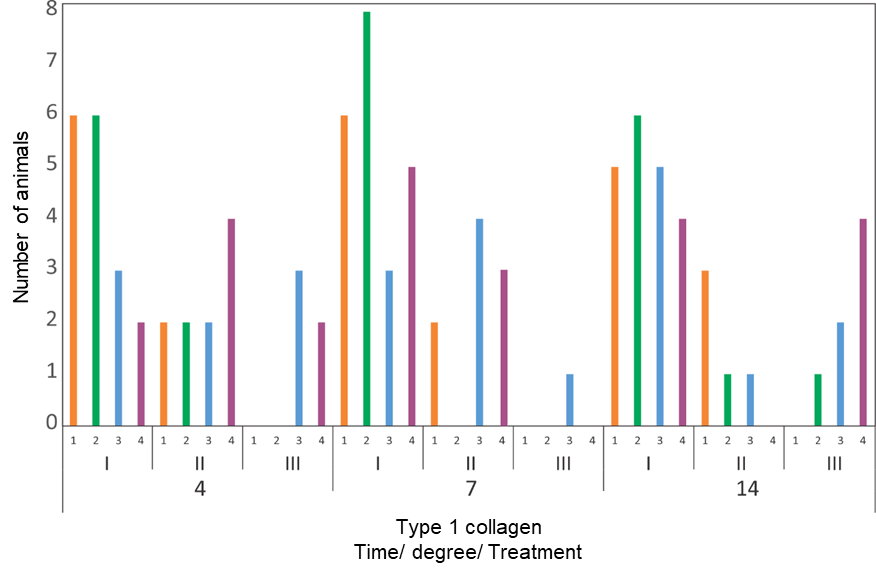Therapeutic laser with or without andiroba oil in treating cutaneous wounds by second intention in Wistar rats
DOI:
https://doi.org/10.21708/avb.2021.15.4.10027Abstract
This study’s objective was to evaluate the efficacy of treating cutaneous wounds in Wistar rats using a therapeutic laser alone or in combination with topical application of andiroba oil. Twenty-four Wistar rats were distributed into three groups (T4, T7, and T14) of eight animals. To prepare the wounds, a total of four skin fragments per animal were removed using an 8-mm cutaneous biopsy punch. Each animal was inflicted with four surgical wounds, and each wound was subjected to one treatment. The treatments were as follows: saline solution (control, Cn); laser therapy (L), using a 660-nm laser wavelength and 10-J/cm² energy density; fresh andiroba oil (An); laser therapy followed by topical andiroba oil administration (LAn). All treatments in all animals were conducted for 4- (T4), 7- (T7), and 14- (T14) day periods. Edema and purulent secretion were observed in three animals in the An group, and the appearance of an exuberant crust was also observed in one animal from the same group. The LAn group presented the worst wound healing rate and contraction velocity (p < 0.05). Microscopically, there was no difference between groups regarding the presence of inflammation, necrosis, formation of granulation tissue, fibroplasia, and the presence of types 1 and 3 collagen at different treatment times. It was concluded that laser treatment of cutaneous wounds in conjunction with andiroba oil application did not present benefits in reference to the 0.9% NaCl.
Downloads

Downloads
Pubblicato
Fascicolo
Sezione
Licenza
Autores que publicam na Acta Veterinaria Brasilica concordam com os seguintes termos: a) Autores mantém os direitos autorais e concedem à revista o direito de primeira publicação, com o trabalho simultaneamente licenciado sob a Licença Creative Commons Attribution que permite o compartilhamento do trabalho com reconhecimento da autoria e publicação inicial nesta revista. b) Autores têm autorização para assumir contratos adicionais separadamente, para distribuição não-exclusiva da versão do trabalho publicada nesta revista (ex.: publicar em repositório institucional ou como capítulo de livro), com reconhecimento de autoria e publicação inicial nesta revista. c) Autores têm permissão e são estimulados a publicar e distribuir seu trabalho online (ex.: em repositórios institucionais ou na sua página pessoal) a qualquer ponto antes ou durante o processo editorial, já que isso pode gerar alterações produtivas, bem como aumentar o impacto e a citação do trabalho publicado (Veja O Efeito do Acesso Livre).


 Esta obra está licenciada com uma Licença
Esta obra está licenciada com uma Licença 